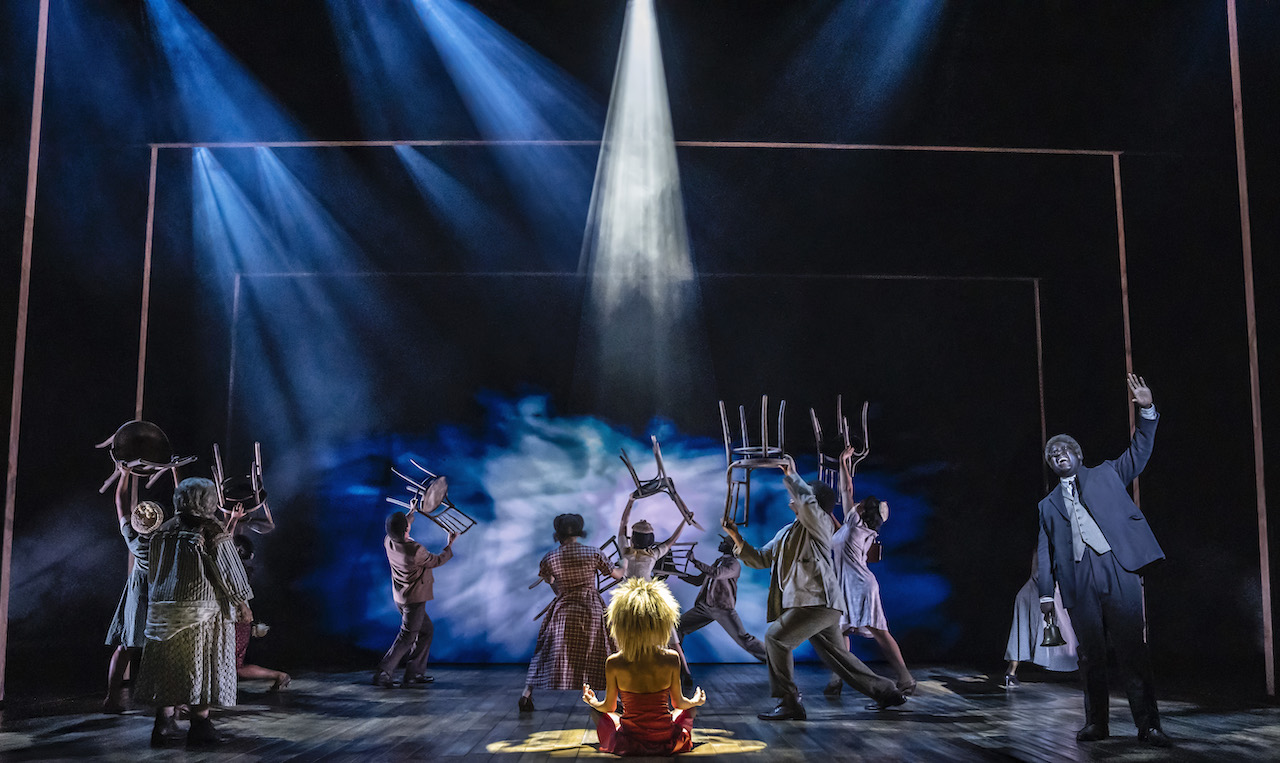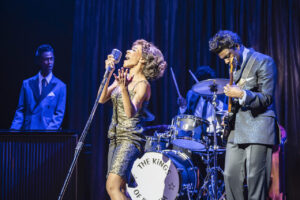
8 – 26 April
Forget Hinckley C, just plug the cables into the Bristol Hippodrome where Elle Ma-Kinga N’Zuzi, playing the role of Tina Turner, has enough energy to light up the entire South West.
While Tina, The Tina Turner Musical fits a predictable jukebox musical format, it also broadens its remit to entertain, but with a fiery illustration of the challenges facing a black girl born in Tennessee in the late 1930s.
So, what was the ticket out of oblivion? For Tina Turner, or Anna Mae Bullock to give her her real name, it was the gift of a voice that became a superpower – raw, gutsy, uplifting, appealing. Add to that a tenacious self-belief and a sheer zest for life, she was finally able to emerge triumphant as a professional singer and entertainer despite the racism, ageism, sexism, misogyny, poverty and male violence that could have silenced her. Eventually acknowledged by many as the Queen of Rock and Roll, she was inducted into the Rock and Roll Hall of Fame in 2021.
A musical in two acts, Tina begins with Anna Mae’s early life leading up to her meeting the fractious Ike Turner (David King-Yombo) and her launch into 16 years of tempestuous touring with the Ike and Tina Turner Revue. In the second act we follow Tina’s at first tortuous climb into the mainstream in Europe via an unlikely collaboration with the band Heaven 17, and producer Phil Spectre (Martin Allanson), leading her to a number one hit, What’s Love Got to Do With it.
Director Phyllida Lloyd’s ability to blend the hottest of dance routines with extraordinary moments of personal crises are bolstered throughout with effervescent choreography from Anthony van Laast and lighting that ranged from soft and suggestive to retina exploding from designer Bruno Poet. A ten-piece band always gave the right amount of oomph when required, without overpowering the main narrative, while the Swing dance troupe always crackled with joyous intensity.
A precocious talent for singing at her local church, we witness Anna Mae’s austere early life with Letitia Hector playing her emotionally detached mother Zelda about to leave an abusive husband. Anna Mae is sent away to live with her Gran Georgeanna played by Claude East whose gorgeous vocals on Don’t Turn Around were a particular treat, before re-joining her fun-seeking sister Alline and her mother who have moved to St Louis. There Anna Mae’s life gets turned upside down by the charismatic and womanising Ike Turner, leader of the Kings of Rhythm band, who is blown away by Anna’s singing voice.

As their career and personal relationship develops on the road, the story doesn’t flinch from depicting the violent side of Ike’s character, with some shocking fight scenes resulting in Tina’s eventual split from her husband. To learn that she has to live on food stamps for two years afterwards says all you need to know about the control Ike had over her financial arrangements.
Amongst a plethora of accolades over the multiple decades of Turner’s career, she was described as having ‘the greatest Legs in showbusiness’, being ‘one of the hottest female singers of all time’, ‘one of the best RnB singers of all time’, ‘one of the best dancers of all time’, and by no means least, ‘sexiest celebrity grandparent of all time’. Stepping bravely into those shoes, Elle Ma-Kinga N’Zuzi delivered a sensational, fully committed performance absolutely worthy of these qualities. In an interview elsewhere on the StageTalk Magazine website she says she is honoured to be keeping Tina’s legacy alive. That we are left in no doubt about the extraordinary talent that Tina Turner was, and the tempestuous nature of her fight for survival, is testament to N’Zuzi’s own great talent.
Told across 22 memorable tunes, Tina covers most of the star’s greatest hits including, of course, Private Dancer, Proud Mary, I Can’t Stand the Rain, We Don’t Need Another Hero, River Deep – Mountain High, before an ecstatic climax culminating in (Simply) The Best, which turned the Hippodrome into a seething arena of adulation.
★★★★★ Simon Bishop, 10 April 2025


